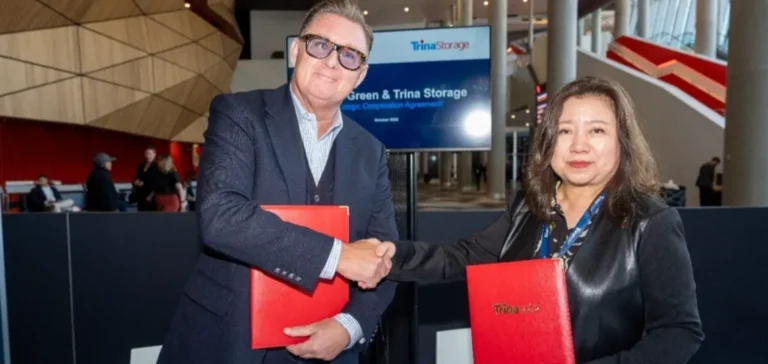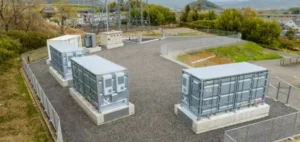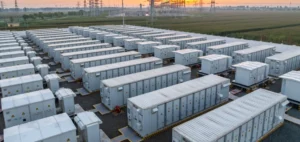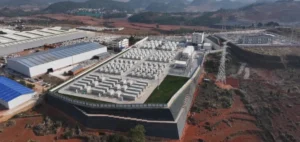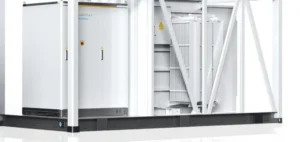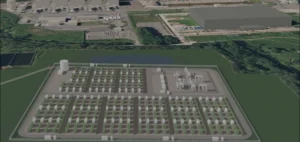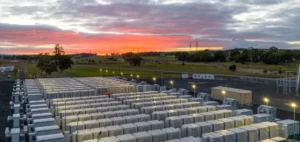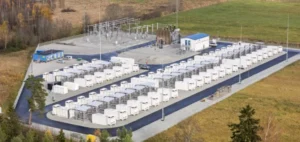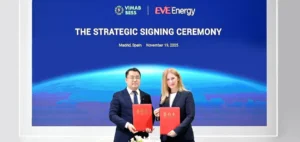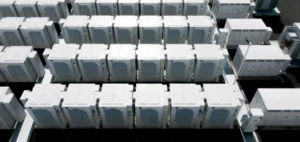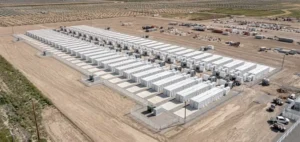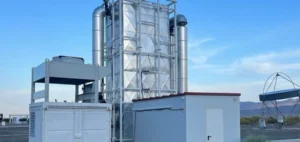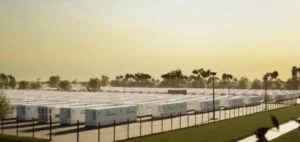Trina Storage, a division of Chinese group Trinasolar specialising in energy storage technologies, has signed a memorandum of understanding with Pacific Green Energy Group for the delivery of battery energy storage systems (BESS) with a total capacity of 5 gigawatt-hours (GWh). The agreement, scheduled for 2026–2028, represents one of the largest commitments in the global energy storage sector.
The partnership includes the supply of large-scale battery systems incorporating advanced technologies designed to improve safety, performance and longevity. Trina Storage will handle equipment manufacturing and delivery, while Pacific Green will lead project development across multiple sites in Australia and other international markets.
Strengthening regional positioning
This operation is part of Trinasolar’s strategy in the Asia-Pacific region, notably following the signing of a 1.5GW Vertex N module supply agreement with Marubeni Australia and its involvement in the Limestone Coast North Energy Park project. The latter, located in South Australia, has an enterprise value of AUD460mn ($295mn) with a planned capacity of 250MW/500MWh.
The memorandum of understanding with Pacific Green consolidates Trinasolar’s industrial presence in the Australian market by integrating solar production and storage activities within a long-term project framework. This approach enables both companies to meet growing demand for grid-scale energy management solutions.
Expanding global pipeline
Pacific Green currently manages a portfolio of storage projects totalling 11GWh, including 7GWh in Australia and 4GWh in Europe. This distribution highlights the scale of the company’s operations, which aim to deploy capacity at scale across multiple jurisdictions. The agreement with Trina Storage comes amid the rapid global expansion of the energy storage market.
Neither company disclosed the specific sites or contractual values involved, but stated that deployments would occur in several phases between 2026 and 2028. The agreement highlights the evolution of strategic partnerships around storage infrastructure, which have become essential components of modern electricity grids.


